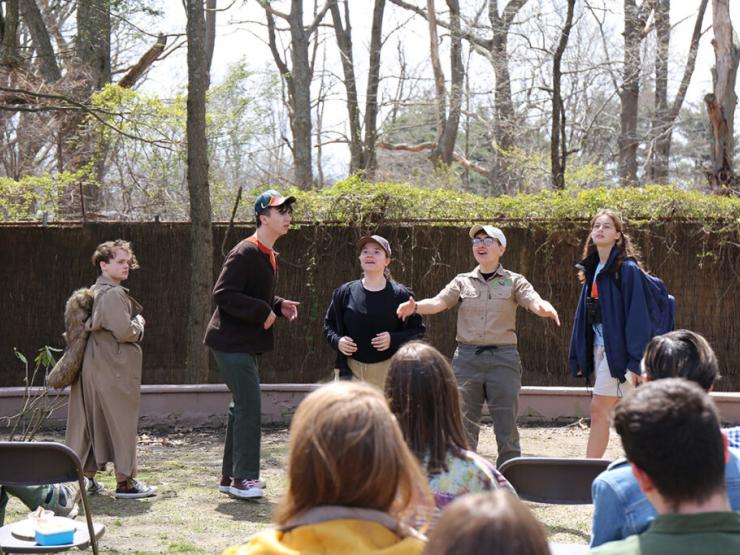As the first half of Emerson's yearlong sequence in writing studies, WR101 focuses on the exploration and performance of the essay as a flexible genre. Students examine different modes and circumstances in which essays are written, and for what uses ranging from the academic to the literary, as well as considering the possibilities and limitations of the genre. In four major writing assignments, as well as a variety of lower-stakes individual and group writing tasks, students engage and employ texts to develop their own ideas, analyze rhetorical situations, and enter into intellectual conversation with other writers.
In alignment with the college's strategic learning objectives that graduates should be ready to create, communicate, collaborate, critically think, and civically engage, by the end of the semester students taking WR101 will be able to:
- Work with a range of texts, media, and cultural practices to come to terms with significant issues through analysis and interpretation.
- Understand how academic and intellectual discourse operates as a conversation in which writers forward and counter what others have written in order to locate their own rhetorical stance.
- Identify and work with rhetorical strategies that are typical of the reasoning in academic and intellectual writing, e.g., putting issues in context, stating propositions, giving reasons, evaluating evidence, justifying assumptions, negotiating differences, and pointing out implications.
- Recognize that writing is a process by learning to offer useful suggestions for other students’ work in progress. And in turn, they will design effective revision strategies by reflecting critically on work in progress.
Course Materials
All sections of WR101 follow a common structure to emphasize the objectives above. To foster innovative and effective curriculum and best engage students, each faculty member develops (through mentoring from senior faculty) an individual syllabus by selecting readings and developing assignments to meet those goals and make the most of their own expertise. Sections of WR101 use three common textbooks as our shared resources for a unified culture of writing:
Reading Culture: Contexts for Critical Reading and Writing edited by Diana George and John Trimbur
This anthology provides a wide range of texts presenting a cultural studies-oriented approach to rhetorical literacy. From scholarly essays and historical documents to examples of visual rhetoric and ethnography, Reading Culture demonstrates many ways in which writers and scholars both engage the world and make arguments and analyses in their own writing, to fit many different rhetorical situations and intellectual demands.
Rewriting: How To Do Things With Texts by Joseph Harris
This book draws the student writer away from static ideas of thesis, support, and structure and toward a more mature and dynamic understanding of how academic writers work with texts as sources in complex, diverse ways. Harris presents scholarly writing as an adaptive and social activity, and highlights a clear set of writerly strategies and rhetorical moves useful to experienced and developing writers alike. He also provides a shared terminology (such as "forwarding," "countering," and "coming to terms") with which students will be able to work in WR101 and beyond to help navigate many demands for scholarly writing.
Writers and Readers: Creating Meaningful Essays and Supportive Writing Communities by Mary Kovaleski Byrnes, Steve Himmer, Whitney James and Molly McGillicuddy
Written by Emerson Writing Studies Program faculty, this custom text maps out the writing process in a detailed and accessible way, from the initial generation of ideas, to brainstorming and outlining, to a comprehensive peer review method, and ultimately the formation of a concise yet adaptable form of the essay upon which students can build to meet future situations in which they write. Unique to our program and drawn from years of collective experience teaching and collaborating with Emerson students, Writers and Readers features examples and commentary from past WR101 students.
